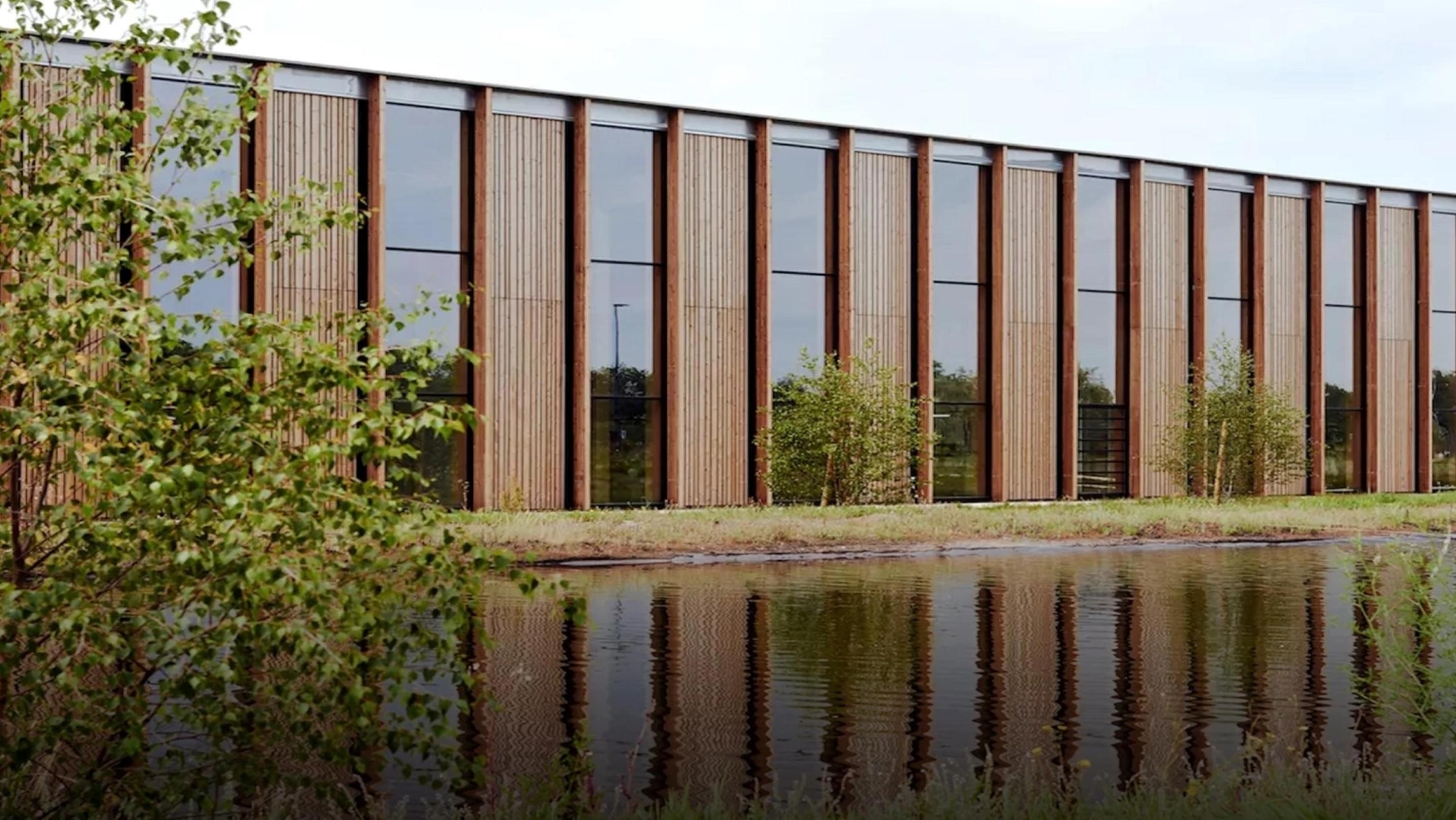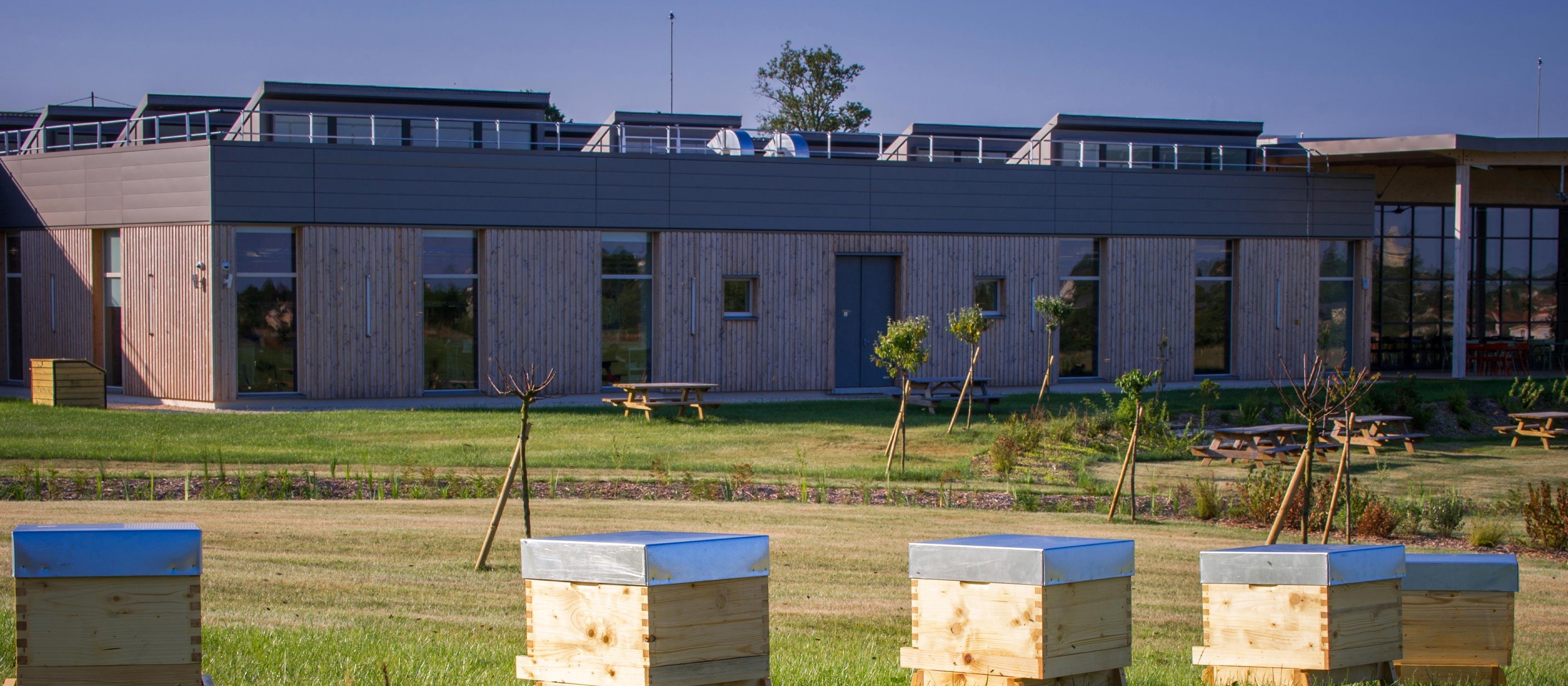
Biodiversity and natural ressources
« Nature has been inspiring us since 1837. Protecting biodiversity is a wonderful opportunity. We must pass on this wealth to future generations. It’s a challenge we must win today »
Axel Dumas, Executive Chairman of Hermès
Ambition
Maintaining an environmental framework conducive to human life and the development of the group's economic activities requires the respect and preservation of biodiversity. Hermès is committed to protecting biodiversity and ecosystems within its direct sphere of responsibility, its extended sphere of influence, and through voluntary commitments beyond its economic sphere of influence.
2024 Key figures
Organisation
The subject of biodiversity is supervised by the Sustainable Development Committee, on which sit two members of the Executive Committee, one responsible for the upstream division (supply chains and manufacturing sites) and the other for organisational development.
The House's commitments align with existing global and national frameworks such as the Global Biodiversity Framework or the French Biodiversity Strategy 2030. Hermès' biodiversity policy aims to preserve biodiversity across all its activities and value chain. It seeks to anticipate and mitigate the disruptions related to biodiversity loss, reduce the footprint of Hermès' activities to ensure the sustainable use of nature.
Objectives
| Pillars | 2026 Objectives | Actions |
|---|---|---|
| Train | Train 100% of the group's employees on biodiversity issues | Hermès is committed to training all its employees, increasing awareness actions, and educating them on biodiversity issues and strategy. A training plan, available in e-learning or in-person, has been in place since 2021. |
| Collaborate | Participate in three biodiversity projects per year | Hermès plans to continue its collaboration with various stakeholders on biodiversity projects, involving its historical partners such as WWF France, CDC Biodiversité, ICFA, and SAOBC. |
| Conduct technical and scientific studies on biodiversity | Hermès is committed to conducting technical and scientific studies, in collaboration with academic partners, to better understand the biodiversity issues related to its activities and sectors. | |
| Assess | Implement the SBTN strong sustainability tool by 2026 - Group scope | Hermès will implement the SBTN strong sustainability tool within the framework of WWF France's Natural Capital Lab. |
| Measure biodiversity footprint using the Global Biodiversity Score approach - Value chain and operations scope | Hermès will measure the biodiversity footprint of its supply chains (leather, silk, cashmere, wood, cotton) using the Global Biodiversity Score (GBS) approach. | |
| Act | Establish biodiversity assessments and action plans for French production sites - Own operations scope | Hermès is committed to establishing biodiversity assessments and action plans for its production sites in France, representing various métiers. |
| Obtain certification and/or labeling of its raw material supply chains - Supply chain scope | Hermès aims to certify or label its raw material supply chains as integrated into the "supply chain briefs." | |
| Define targets in line with the group's Forest policy | Hermès continues its efforts to source from a deforestation-free and more responsible supply chain while ensuring compliance with the duty of vigilance. |
Impact measurement
Hermès assesses the impacts of its activities on biodiversity as well as the risks related to biodiversity loss on its business model, particularly on its supply chains. Hermès evaluates the impacts of its activities on biodiversity as well as the risks related to biodiversity loss on its business model, particularly on its supply chains. This strategy has been validated by a panel of experts and is notably based on two recognized scientific approaches:
- Science based target : The Science Based Targets Network, created in 2019, brings together more than 50 organizations and aims to transform business models towards a nature-positive economy, based on the best available scientific data. This network defines five steps to set science-based targets for nature (SBTN – Science Based Targets for Nature)
- Global Biodiversity Score, A tool currently used to conduct the biodiversity footprint assessment of the Hermès group. It allows the study of the impacts caused by the company on a large part of its value chain, i.e., within its direct operations and suppliers, which includes the sourcing of raw materials
Focus on the Science Based Targets for Nature initiative
The group adopted the SBTN method in 2023 and initiated work on the initial steps of the approach for which guidelines were available, namely:
- Assessing the pressures exerted by the company on biodiversity
- Interpreting and prioritizing sites, priority sectors, and work to be carried out
The group positions itself as a pioneer on the biodiversity issue by joining the first companies to officially apply the approach. Hermès strives to manage identified material risks and impacts, particularly those related to the availability and quality of natural raw materials. By collaborating with NGOs such as WWF France and using robust assessment tools, the House proactively identifies and manages these risks, impacts, and opportunities, notably by using methodologies like the Science Based Targets for Nature (SBTN) and measuring the biodiversity footprint according to the five pressures of IPBES.
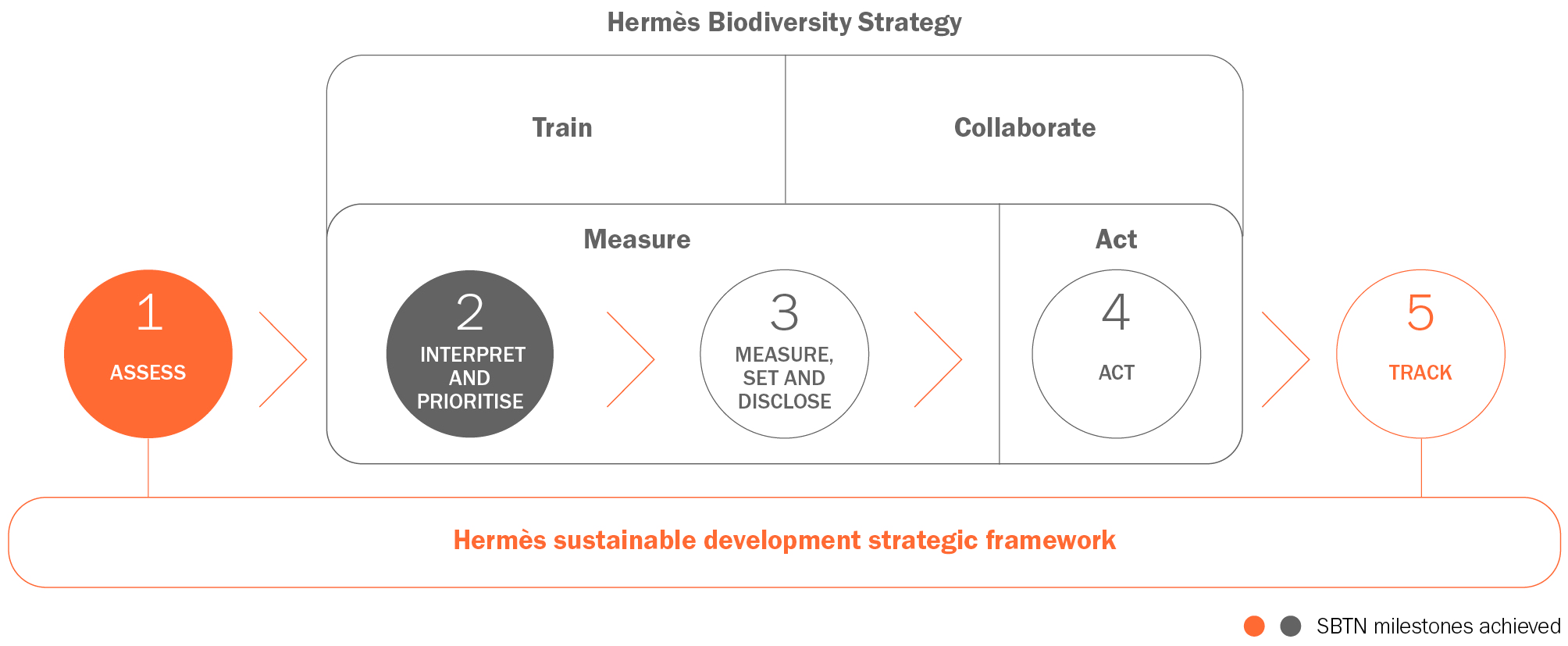
The group positions itself as a pioneer on the biodiversity issue by joining the first companies to officially apply the approach. Hermès strives to manage identified material risks and impacts, particularly those related to the availability and quality of natural raw materials. By collaborating with NGOs such as WWF France and using robust assessment tools, the company proactively identifies and manages these risks, impacts, and opportunities, notably by using methodologies like the Science Based Targets for Nature (SBTN) and measuring biodiversity footprint according to the five pressures of IPBES.
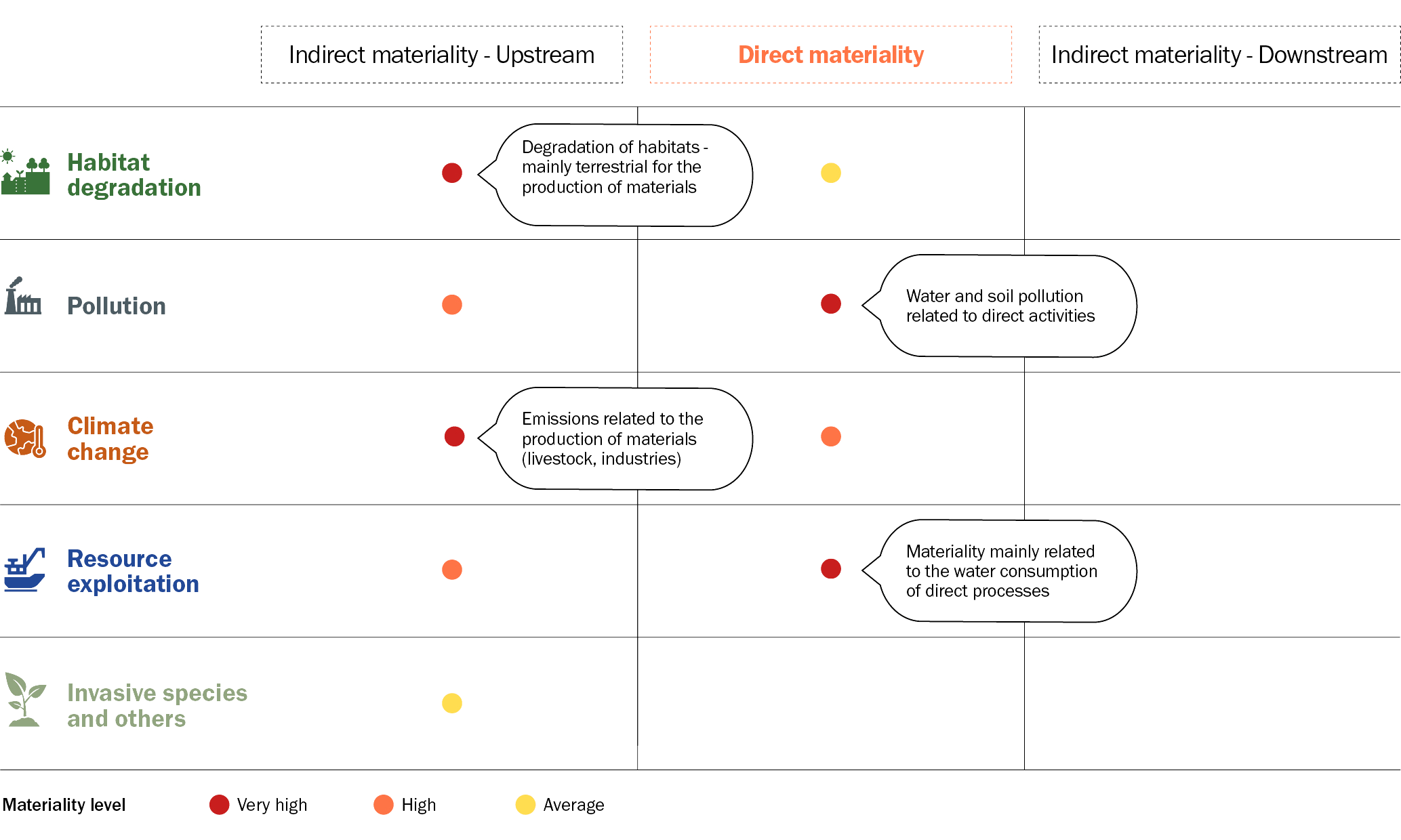
Initiatives
Within the direct sphere of responsibility
The Harmonie framework: With a real estate portfolio of approximately 500 buildings, Hermès ensures that these and construction projects meet the highest environmental standards. This real estate portfolio covers a rich typology of buildings: production sites, logistics centers, stores, offices. This scope motivated the development and implementation of a specific real estate framework, the Harmonie framework, in 2016, allowing a more accurate measurement of the environmental issues of all construction, development, and renovation projects of the House, aligned with its values of excellence and uniqueness. This framework, significantly more demanding than industry standards, was certified in November 2022 by the independent third-party verification body, Bureau Veritas.
Local action plans are gradually being implemented by the sites to protect biodiversity at their scale, such as the Maroquinerie de la Sormonne, certified E4C2, located in the heart of a wetland that has adapted to a very rich fauna and flora.
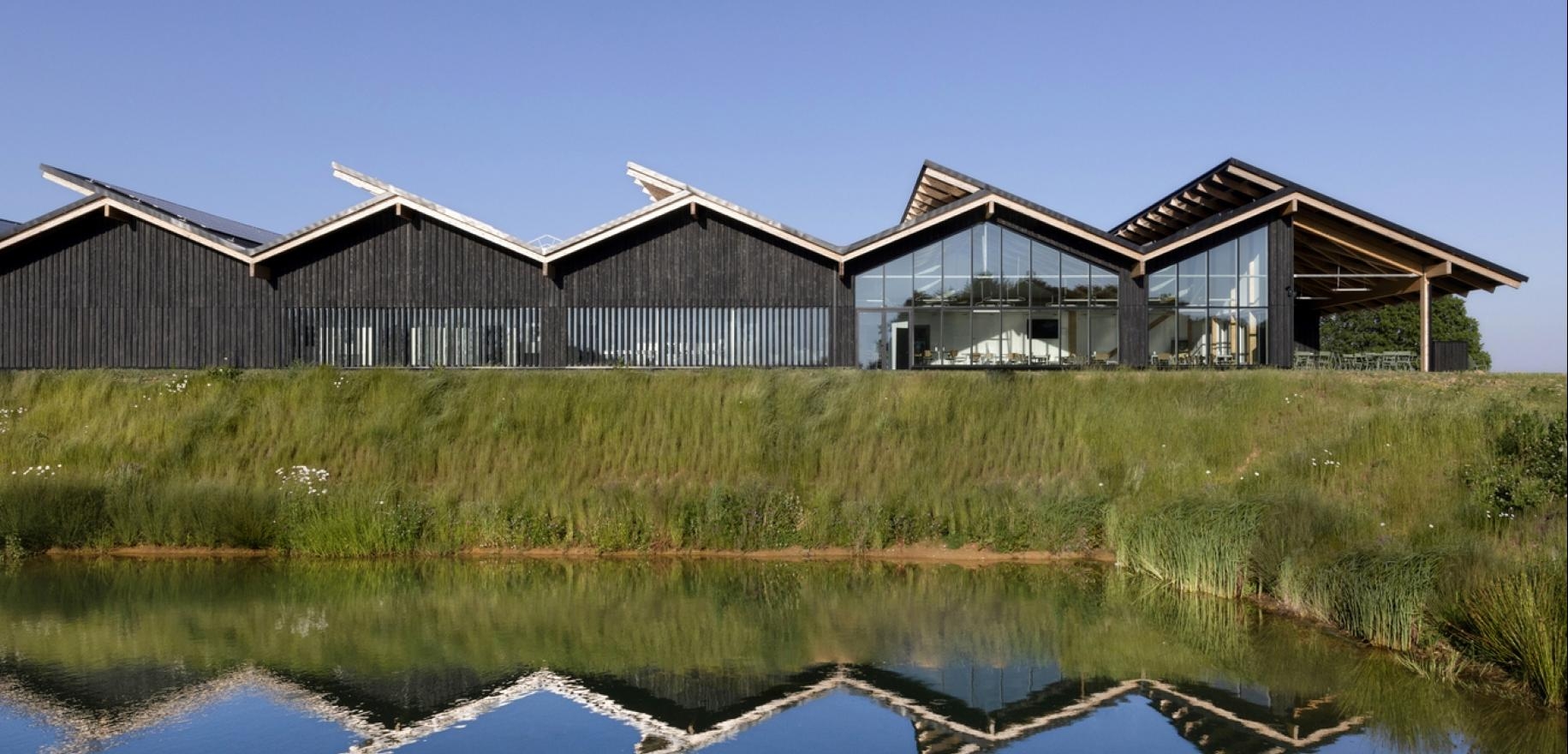
Within the sphere of indirect responsibilities: responsible sourcing
- In 2020, a collaboration with the CISL of Cambridge confirmed its ecological value: carbon sequestration by mulberry plantations, soil regeneration, and reduction of agrochemical products benefiting local biodiversity (pollinators and soil fauna)
- The partnership between Hermès and WWF France: In 2023, Hermès concluded a study with innovative and collaborative multi-stakeholder governance between WWF France, WWF Mongolia, and the Mongolian University of Life and Sciences to analyze the cashmere sector in Mongolia and its impact on nature from a macroeconomic perspective. Local stakeholders (herders, agro-specialists, traders) were consulted for this study. These conclusions joined the pilot solutions already implemented by Hermès with local partners and the association AVSF (Agronomes et Vétérinaires sans Frontières)
Above and beyond: voluntary commitments
As a responsible company, Hermès voluntarily addresses biodiversity-related issues beyond its activities:
- Support for more sustainable agricultural development: In Brazil, the group, through its partners, undertakes actions to sustain the silk sector (i.e., mulberry cultivation, silkworm farming), particularly in the face of environmental transition challenges, thereby helping to secure the livelihoods of farmers and local communities
- Funding for ecosystem preservation projects, soil restoration, and agroforestry development: The Livelihoods Carbon Funds, of which Hermès has been a partner since 2012, also work to restore biodiversity, having replanted more than 150 million trees to date (31/12/2023). For example, with a project to protect and plant mangroves in the Ganges delta, helping the mangrove to reinforce dikes, a true barrier for villages and arable land against devastating floods and cyclones
Our policies and publications
To go further and discover our main sustainability policies and recent publications
